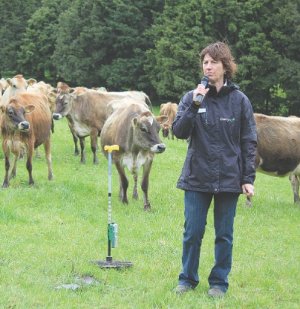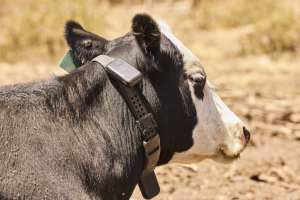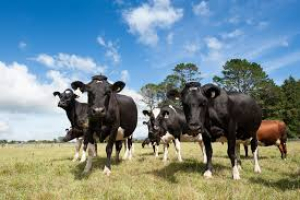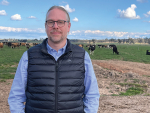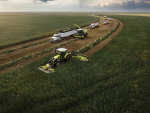Studies have shown that cows with a body condition score (BCS) less than 4.5 have less chance of getting in calf. Hedley says managing feed to match metabolic needs for cows during this period can be very helpful when keeping cows in the best shape for mating.
To do this, Hedley recommends grazing out winter-saved pastures to a consistent and even residual in the first grazing round after calving to ensure cows have access to a higher quality pasture when they need it at mating.
The theory behind this is cows eating habits and the way pasture grows says Hedley.
Cows are hardwired to lose one BCS within the first four to six weeks after calving with feed quantity having little impact on the amount of BCS loss over this period. “Any extra feed you offer cows over this time will go straight into the vat.”
Feed quality and quantity become very important coming up to and at mating to ensure cows do not continue to lose weight. “Once you get past 6-8 weeks after calving you run the big risk that cows will keep on producing milk but they will start losing weight if they are not fed enough high quality feed.”
If the feed offered is poor quality this not only reduces the amount of energy eaten per kg dry matter but also how much they can eat. A cow can eat more kg DM of feed that is high quality (12 MJME/kgDM). It is often said that cows need to be on a rising plane of nutrition coming up to mating but it is more about preventing cows having a sudden drop in energy eaten.
Pasture growth is maximised when ryegrass plants are grazed when a tiller has has three leaves or early if there is canopy closure; this can occur in rapid growing, nitrogen boosted pastures when the plant has only two tillers due to stem elongation.
Hedley says that going too fast in winter can limit the potential of pasture while going too slow can reduce the amount of ME cows were able to get out of the pasture if the pre-graze covers are too long and pasture quality is less. By monitoring average pasture cover and keeping it in the window of 2000-2400 from mid spring to winter, pasture growth can be optimised and pre-graze cover managed,
Monitoring the time cows graze when they hit the ‘target’ residual of consistent and even grazed out pastures will maintain grass quality for future grazings. Spring pasture management is not a sprint. It is easy to get cows to do peak production by leaving high residuals for a couple of rotation. However, this will affect both production and mating if cows are forced at mating to graze lower than previous grazings. Farmers could do this by monitoring residual growth and cow habits and then using supplements to maintain a rotation and consistent even residuals.“It’s a case of grazing pastures to remove all pasture grown over the winter to have good quality feed to offer the cows as they reach peak intake 8-10 weeks after calving. This is not simple in Northland and pugging must be avoided.
Results from a monitor farm experiment in BOP suggested farmers who managed this would be rewarded with high performing pastures that cows would want to eat, she says.
“You could produce a lot of milk and leave a bit of residual here but then the result is going to be a poorer quality pasture when the cows need it.”
Supplements could be used to provide cows with the necessary energy when things were tight but Hedley recommended against making changes to animals’ diets that result in a sudden drop in energy.





